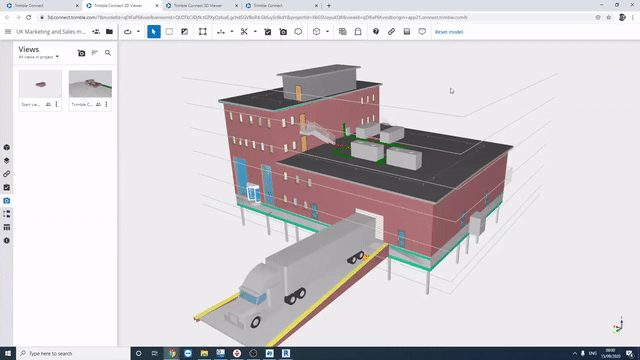A Biased View of 3d Bim Modeling – Tag – Archello
It also covers spatial relationships, geospatial details, amounts and properties of building parts (for instance, producers’ details), and makes it possible for a wide variety of collective procedures relating to the constructed possession from preliminary planning through to construction and then throughout its operational life.electrical design consultant BIM authoring tools provide a style as combinations of “things” unclear and undefined, generic or product-specific, solid shapes or void-space oriented (like the shape of a room), that carry their geometry, relations, and qualities. 3d modeling services.
These different views are immediately consistent, being based upon a single meaning of each item circumstances. BIM software application also specifies items parametrically; that is, the objects are specified as specifications and relations to other things so that if an associated object is changed, reliant ones will immediately also change. Each design component can carry qualities for picking and purchasing them immediately, offering expense quotes along with product tracking and buying (3d modeling services).
Each professional includes discipline-specific information to the shared design – commonly, a ‘federated’ model which combines several various disciplines’ models into one (3d modeling services). Combining models enables visualisation of all models in a single environment, much better coordination and advancement of styles, boosted clash avoidance and detection, and enhanced time and expense decision-making.

The supporting procedures of building lifecycle management includes expense management, building and construction management, job management, facility operation and application in green building. A ‘Common Data Environment’ (CDE) is defined in ISO 19650 as an: A CDE workflow explains the procedures to be utilized while a CDE service can provide the underlying technologies.
Structure information designs span the whole concept-to-occupation time-span. To make sure efficient management of details processes throughout this period, a BIM supervisor may be selected. The BIM supervisor is kept by a design construct group on the client’s behalf from the pre-design stage onwards to establish and to track the object-oriented BIM versus forecasted and determined performance goals, supporting multi-disciplinary structure information designs that drive analysis, schedules, liftoff and logistics.
Individuals in the building process are continuously challenged to deliver effective projects despite tight spending plans, limited manpower, accelerated schedules, and minimal or conflicting info. The substantial disciplines such as architectural, structural and MEP designs should be well-coordinated, as 2 things can’t happen at the same location and time. 3d modeling services. BIM additionally has the ability to help in crash detection, recognizing the precise place of discrepancies.

Sub-contractors from every trade can input important information into the design before starting construction, with opportunities to pre-fabricate or pre-assemble some systems off-site. Waste can be minimised on-site and products delivered on a just-in-time basis rather than being stock-piled on-site. Amounts and shared properties of products can be drawn out quickly.
Bim Vs. Cad Files: What’s The Difference? – Thomas Blog for Beginners
Systems, assemblies and sequences can be revealed in a relative scale with the entire facility or group of facilities – 3d modeling services. BIM likewise prevents mistakes by making it possible for conflict or ‘clash detection’ whereby the computer system design aesthetically highlights to the team where parts of the structure (e. g.: structural frame and building services pipes or ducts) might wrongly converge.
This can yield advantages to the center owner or operator. For instance, a structure owner may find proof of a leak in his structure. Rather than checking out the physical structure, he may rely on the design and see that a water valve is situated in the suspect area. He might also have in the model the specific valve size, maker, part number, and any other info ever researched in the past, pending appropriate computing power.
Dynamic details about the structure, such as sensing unit measurements and control signals from the building systems, can also be integrated within BIM software application to support analysis of structure operation and upkeep. There have been efforts at creating info designs for older, pre-existing facilities. Methods consist of referencing key metrics such as the Facility Condition Index (FCI), or utilizing 3D laser-scanning studies and photogrammetry strategies (independently or in mix) or digitizing traditional structure surveying methods by utilizing mobile technology to catch precise measurements and operation-related information about the possession that can be utilized as the basis for a design.
Among the challenges to the appropriate maintenance and management of existing facilities is comprehending how BIM can be used to support a holistic understanding and implementation of building management practices and “cost of ownership” concepts that support the complete item lifecycle of a building. An American National Standard entitled APPA 1000 Total Cost of Ownership for Facilities Property Management includes BIM to consider a range of critical requirements and expenses over the life-cycle of the structure, including but not restricted to: replacement of energy, utility, and safety systems; continuous upkeep of the building outside and interior and replacement of products; updates to design and functionality; and recapitalization expenses – 3d modeling services.

 Auctioneers
Auctioneers Shopping Mall
Shopping Mall Money Lenders
Money Lenders